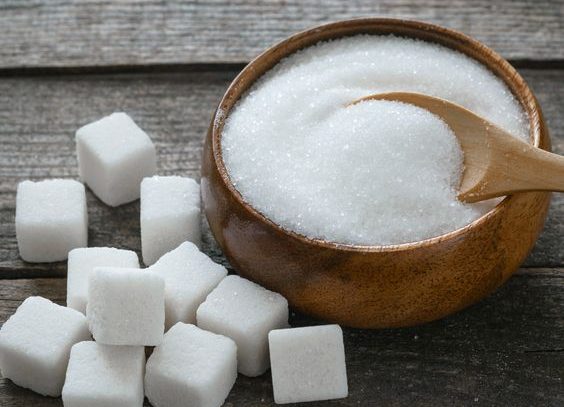The demand for low-calorie sweeteners and health consciousness are driving a transformation in the worldwide sweetener business. Sucralose, known for its intense sweetness and calorie-free profile, remains a key choice. With advancements in technology, regulatory approval, and a shift toward healthier lifestyles, the sucralose market is set for continued growth into 2025.
Market Overview
Sucralose, a high-intensity sweetener derived from sucrose, is approximately 600 times sweeter than sugar yet contains zero calories. Food, drinks, medications, and personal hygiene items have all made extensive use of it. Sucralose demand is expected to expand at a strong rate, according to market analysts, with a compound annual growth rate (CAGR) of 5-7 percent through 2025. This growth is attributed to its versatility, safety approvals, and increasing popularity among health-conscious consumers.
Key Drivers of Market Growth
1. Demand for Low-Calorie and Sugar-Free Products
As obesity rates and associated health issues continue to rise, people around the world are looking for better options. Sucralose’s calorie-free nature makes it a preferred ingredient in sugar-free beverages, baked goods, and processed foods. Additionally, government initiatives to reduce sugar consumption further amplify the demand for sucralose-based products.
2. Advancements in Food and Beverage Innovation
Manufacturers may now add sucralose to a range of recipes without sacrificing flavor thanks to technological developments.In 2025, we can expect a surge in sucralose applications in plant-based foods, functional beverages, and keto-friendly snacks. Its heat stability ensures consistent sweetness even in high-temperature cooking and baking processes.
3. Expansion in Pharmaceuticals
In the pharmaceutical sector, sucralose is used to mask the bitterness of active ingredients in syrups, chewable tablets, and other oral medications. As healthcare access improves globally, particularly in emerging markets, the use of sucralose in drug formulations is predicted to grow.
4. Increased Adoption of Convenience Products
The popularity of ready-to-eat meals and beverages that can be consumed on the fly has been driven by busy lives. Sucralose’s ability to enhance flavor profiles without adding calories makes it a valuable addition to these products, catering to health-conscious consumers.
Regional Insights
1. North America
Because of its strong emphasis on health and wellbeing, strong food and beverage sectors, and high consumer awareness, North America continues to be a dominant market for sucralose. By 2025, this region is expected to maintain a substantial share of the global sucralose market.
2. Europe
Despite strict regulations surrounding food additives, sucralose has gained widespread acceptance in Europe, particularly in sugar-reduction initiatives. The region’s growing demand for diabetic-friendly and reduced-sugar products supports market growth.
3. Asia-Pacific
Rapid urbanization and shifting dietary patterns are expected to fuel the fastest growth in sucralose demand in the Asia-Pacific region. Leading adopters include emerging economies like China, India, and Indonesia, which are aided by growing food and beverage industries.
4. Latin America and the Middle East & Africa
While currently representing a smaller market share, Latin America and the Middle East & Africa are poised for growth due to rising awareness of healthy lifestyles and improving economic conditions. There are plenty of chances to expand your business in these areas.

Challenges Facing the Sucralose Market
1. Health Concerns and Public Perception
Despite being approved by major regulatory bodies such as the FDA and EFSA, sucralose has faced scrutiny regarding its potential impact on gut health and safety at high temperatures. Public misconceptions and ongoing debates about artificial sweeteners continue to pose challenges.
2. Competition from Natural Sweeteners
Stevia and monk fruit are natural substitutes that have become more popular as a result of consumers’ desire for “clean label” goods.The perception of natural sweeteners as healthier options has intensified competition for sucralose in the market.
3. Environmental Impact
Sucralose’s persistence in wastewater systems has raised environmental concerns. Unlike natural sugars, sucralose does not degrade easily, prompting the need for sustainable production practices and improved waste management.
Key Trends to Watch in 2025
1. Blending with Natural Sweeteners
Manufacturers are increasingly mixing natural sweeteners with sucralose to appeal to a wider range of consumers. These combinations deliver superior flavor profiles and meet the demand for products labeled as natural while reducing production costs.
2. Focus on Functional Foods and Beverages
Functional meals and drinks that are enhanced with components that promote health are becoming more and more popular. Sucralose’s compatibility with these products ensures its inclusion in emerging wellness-focused categories.
3. Growth in Private Label Offerings
Retailers are expanding their private-label portfolios to include sugar-free and low-calorie products. Sucralose’s affordability and effectiveness make it a preferred choice for these brands, driving market growth.
4. Sustainability Initiatives
As sustainability becomes a priority, manufacturers are adopting eco-friendly production methods and packaging. Resolving environmental issues is essential to preserving customer confidence and guaranteeing long-term market sustainability.
Market Predictions for 2025
1. Steady Market Expansion
By 2025, the worldwide sucralose market is projected to be worth more than $5 billion. Steady growth will be fueled by increasing demand across diverse industries, particularly in emerging markets.
2. Wider Adoption in Emerging Economies
Emerging markets in Asia, Africa, and Latin America are likely to witness accelerated adoption of sucralose, driven by changing lifestyles, urbanization, and increasing awareness of sugar-related health risks.
3. Evolving Regulatory Landscape
Ongoing research into sucralose’s safety and benefits may lead to updated regulatory guidelines.
To maintain customer trust, open and honest information regarding its environmental impact and safety will be crucial.
4. Innovative Product Formulations
Manufacturers will continue to innovate, developing new applications for sucralose in diverse product categories. These innovations will enhance market competitiveness and expand consumer options.
Conclusion
The sucralose market is growing steadily, driven by demand for healthier alternatives, food technology advancements, and diverse applications. Despite competition from natural sweeteners and environmental concerns, innovation and sustainability efforts will sustain its global relevance. Sucralose remains a key ingredient in the sweeteners industry, aligning with health-conscious consumer preferences.
